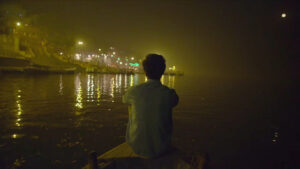Cities have been explored as a muse both in literature and cinema. In the latter, the dynamics between space and time are ones that truly make a film what it is. Essentially, it is the setting that comes to define the characters and it is the spatialization of the plot that comes to define the aesthetics.
Several recces and background researches are conducted to fit a story into a city, and a lot of the city becomes the story’s character as well. The films that evoke in us an enduring urge to explore the world — Dil Dhadakne Do, Zindagi Na Milegi Dobara and Dil Chahta Hai; all give a sense of the cities that they cater. Their narratives would’ve fallen flat, had it not been for the process they undertook to give the audience a sense of the city.
As films make for a medium that involve the sensorial, the cities that a film creates within its ambit are based on keen observations made by the filmmakers. They are a product of a lived experience that is beyond the generic, a unique blend of the real and imaginary. What is often used as a phrase is often a strong intention, a film is made to transport you to an alternate reality indeed. The creation of this alternate reality is a process that demands extreme finesse and awareness, and some films succeed at it almost effortlessly.
1. Bombay – Dualities of the city of dreams
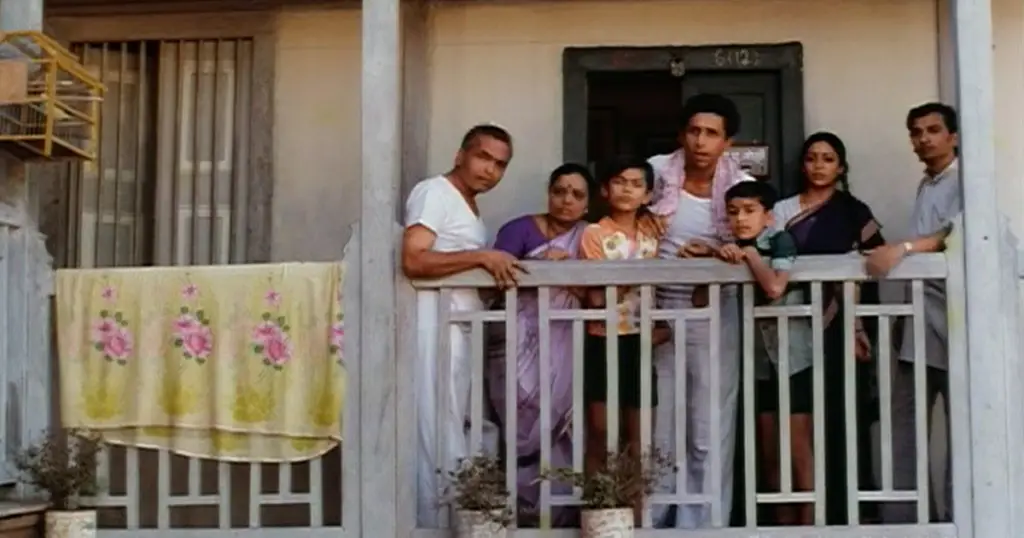
Besides the many books written by the literary maestro Rohinton Mistry, elements of Bombay have formed the backdrop of several key films. When we watch Johnny Walker dance to ‘Bombay Meri Jaan‘, we can’t help but feel the duality of the city through the words of his song in the film CID. While in Katha, the microcosm of the city is shown through the chawl, the very same duality is brought out through the story of Rajaram and his foil Bashu. The film is based on S.G. Sathye’s Marathi play titled Sasa aani Kasav (Hare and Tortoise), which modernises the classic hare and tortoise narrative to fit the modern city life dynamic.
Besides, Bombay has been used by major international productions as well. The most noteworthy of them being the Danny Boyle-directorial Slumdog Millionaire. Set in the largest slums in India, Dharavi, this film follows the journey of an ordinary boy’s rags-to-riches tale. Another film based in the same milieu is Dharavi, directed by Sudhir Mishra. Based in the underbelly of Mumbai, this film shows us the other side of all the dreams that Bombay promises, with an understated realism. What is most noteworthy about this film is its dream sequences. They are testimony to the dream that the cruel city projects, which, when contrasted with a morose reality shows the many polarities of Mumbai.
Recommended: 10 Best Indian Films You Haven’t Seen
Although, with Basu Chatterjee’s Bombay, we see the city of dreams draped in simplistic clothing; that is to say that we see a city with lesser chaos and more chase, it would not be wrong to say that Bombay has been represented mostly as a city of dreams, chaos, cruelty and most importantly, duality. If we even look at films that aren’t based in Bombay, a simple dialogue that hints at a character leaving to make it big in the big city, ultimately refers to Bombay. Such is its cinematic identity.
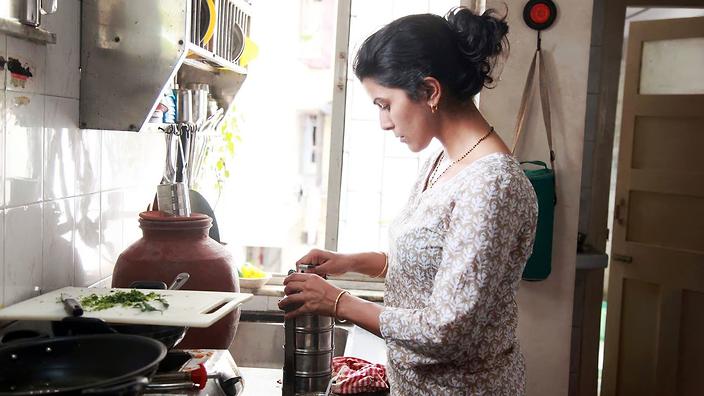
But, in a key narrative like that of Bombay Talkies, the ‘Bombay’ element comes to unify four different stories through the thread of the ‘talkies’. In Vishal Bhardwaj’s Maqbool, we watch a Shakespearean story unravel in the Bombay under-world, which is another offbeat adaptation set in the city. In Ritesh Batra’s The Lunchbox, Mumbai and its infallible tiffin system sets the stage for love. It is a beautiful rendering of how a place and its underlying cultures can play out in the development of a story.
Recommended: 9 Delightful Bollywood Romances Worth Your Time
2. Delhi – Chaos in the melting pot

The city has been a place of great affection for the best of storytellers. Reams have already been said, written and filmed around this city. Harking back to the Dev Anand-starrer Tere Ghar Ke Saamne, Delhi has been a muse for filmmakers from the early days of Indian cinema. The evergreen song ‘Dil ka bhanwar kare pukar‘, from this film, was the last song to be shot in the Qutub Minar complex, such is the legacy of Dilli cinemas.
Starting from the Shoojit Sircar directorial Vicky Donor, which is set in Delhi — with its protagonist living in Lajpat Nagar, and his sperm bank located in Darya Ganj, the classic Delhi slurs, settings and Punjabi-ness — this film manages to capture the city in its true light.
But, very few films encapsulate the spirit of Delhi like Dibakar Bannerjee’s Oye Lucky Lucky Oye! It highlights the class divide that exists in the city, and how people thrive on aspirations. As our protagonist, Lucky, envies the life of a South Delhite; he enters a life of crime to get whatever he deems as a signifier of a supposedly good life. Tapping into the mentality of the not-so-well-to-do in the city, the film reflects its quality of trapping a person’s psyche. Spotlighting the same class divide but in a fun, light-hearted way is Maneesh Sharma’s Band Baajaa Baaraat starring Ranveer Singh and Anushka Sharma.
Recommended: 11 Bollywood Romantic Comedies We Love To Rewatch
If we have talked about Basu Chatterjee’s Bombay, it is also incredibly important to look at his depiction of Delhi in the film Rajnigandha. Right from glimpses of the coffee house to the India Gate, all make up for a comprehensive investigation into Delhi’s less chaotic spaces from back-in-the-day. Besides, capturing the spirits and locales of Delhi with equal brilliance, Rakeysh Omprakash Mehra has paid tributes to his city in his films like Delhi-6 and Rang De Basanti. Imtiaz Ali’s Rockstar is another example of a brilliant film that relies on the city for its story, specifically its music. I doubt, Kun Faya Kun would’ve had the same impact elsewhere.
One of the many other films that split the city’s belly open is the lesser-known Moh Maya Money. The film traces Aman’s (Ranvir Shorey) trapeze into the world of crime as his greed motivates him to falter on a moral front. As he goes corrupt, the story unravels and the pieces start falling apart. The film truly showed the darker side of the otherwise lightly depicted city. The sociological charisma of the city fades away into its gritty realities.
Recommended: 13 Best Bollywood Thrillers On Netflix: Talvar, Andhadhun…
3. Banaras – Between hope and death

The primary thematics that run in the depiction of Banaras are those of union, hope and death. One primary example of a film in which all three form the crux of the ‘Sangam’ is Masaan. Banaras emerges as a dividing factor between the lovers who live on two ends of the city. The treatment of death in the film with respect to the two protagonists is extremely sensitive, and the scene where Deepak finds Shaalu‘s body on the ghat is extremely poignant.
A similar treatment of death could be noticed in the film Mukti Bhawan. The film centers around a reluctant son who is forced to take his father to Varanasi, where he believes he will attain salvation upon breathing his last breath. An interesting turn of events ensue when both of them choose to stay in a hotel called ‘Mukti Bhawan’, where several such people with a similar motive choose to stay till they meet their fate. While one film links Banaras and death in the occupationally painful and romantically heartwrenching way, the other shows the commercialisation of death that happens in the city.
One of the most significant stories based in Banaras, however, is Deepa Mehta’s Water (2005). It is set in 1938 Banaras, and concerns the lives of widows at an ashram therein. In this film too, the riverside serves as a meeting point, and the under-goings of a seemingly religious society are brought to the fore. But, besides films that are essentially about loss and grief, light-hearted romances like Raanjhana and Angrezi Mein Kehte Hain too have found home here.
4. Kolkata – As culture and as character
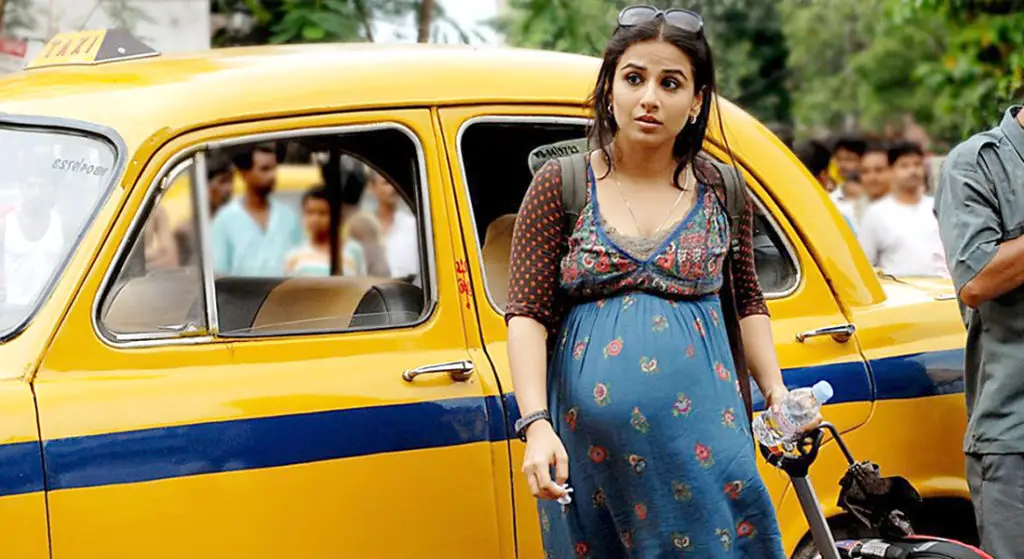
With a film opening with a song that says ‘Kolkata dekho toh baaki duniya bekar hai‘, this city in particular has fascinated filmmakers over the years and has been the epicenter of numerous stories. Directed by Sujoy Ghosh, Kahaani uses the city as a character, and goes on to define it in a song.
Directed by Vidhu Vinod Chopra, Parineeta artistically captures Kolkata. it shows us the most exquisite frames the city could render. Specifically, the song Piyu Bole captures the landmark monument Howrah Bridge in all its majesty. Another Sharat Chandra Chattopadhyay story adapted by Sanjay Leela Bhansali and Bimal Roy, Devdas is set in the colonial city of Calcutta during pre-World War II years. Along-with its stark social commentary, the films capture the culture of Calcutta and all its nuances from that era.
Last one on my list is the Sushant Singh Rajput-starrer Detective Byomkesh Bakshy. Featuring a particularly popular Bengali character, the film bases itself upon the stories of Sharadindu Bandyopadhyay. Showing a Calcutta that is all about smugglers and smoke, director Dibakar Bannerjee strikes gold with Calcutta just as he does with the Delhi of his imagination in films like Khosla ka Ghosla. With noir cinematography, the film reveals the city of Calcutta, bustling even at night with dark shadows, and reveling in its trams that run in the city’s veins.
Recommended: 15 Best Indian Thrillers On Amazon Prime: Tamil, Hindi, Malayalam
5. Rajasthan – In the bucolic imagination
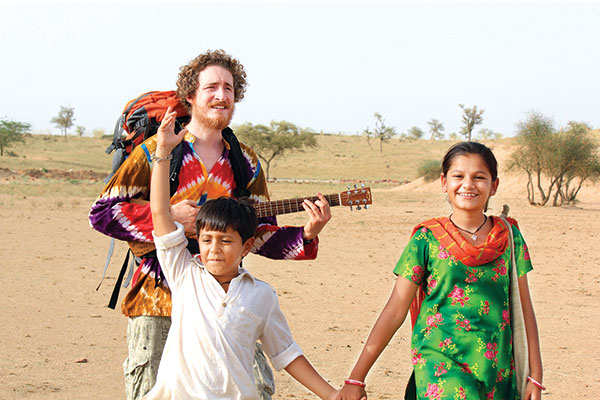
Based on the same story by Vijaydan Detha, Mani Kaul’s Duvidha and Amol Palekar’s Paheli show a Rajasthan from the perspective of an old, beloved folk tale, passed on through the ages. Showing glimpses into the lives of village women in Rajasthan, another pertinent narrative based in rural parts of the state is Parched. Starring Radhika Apte, the film reflects a society plagued with social evils such as child marriage and dowry, showing a mirror to the stark realities prevalent in the state even today.
Other modern tales based in the rural side of the state include I am Kalam and Dhanak. I am Kalam was shot in Bikaner. It is based around the life of a boy, who, in his pursuit of wanting to meet A.P.J Abdul Kalam, ends up changing his name to Kalam. Showing the aspirations of a young Rajasthan lad, this film gives us a peep into the simplistic lives lead by the people of the state. (Related: 9 Memorable Indian Films Led By Child Artists)
Dhanak follows star-struck siblings Pari and Chotu, who set out on a journey with a dream in their eyes. The film is lush visual delicacy, courtesy cinematographer Chirantan Das, who majestically, captures the land of sand and sun. Both Rajasthan and its music have a character of their own and breathe color and meaning into the title, which means a ‘rainbow.’ Dhanak premiered at the 65th Berlin Film Festival winning the Crystal Bear Grand Prix for Best Children’s Film.
Recommended: 12 Indian Indie Films You Shouldn’t MissFrom 2016
Special mention – Wasseypur
Of all the places that have been spatialised in cinema, the rarest and possibly the best is Anurag Kashyap’s Wasseypur. Emulated on the screen with honesty and essentiality, both the films paint quite an accurate picture of the city — its language, bloodthirsty politics and its overall culture.
Piyush Mishra’s rustic voice in the narration, intermixed with repetitive documentary footage in the visuals establishes the space for us, time and again. We are guided into the houses of the rival gangs throughout, and the music is particularly noteworthy in familiarising the locales to us. Employing localised humour and characterisation, Kashyap creates a universe as true to life as it could have been. ‘Humni ke choddhi key‘ and ‘Moora song‘ in particular capture the spirit of the space incredibly well.
By Sanghmitra Jethwani
Recommended: 50 Must Watch Bollywood Movies Of The 21st Century

